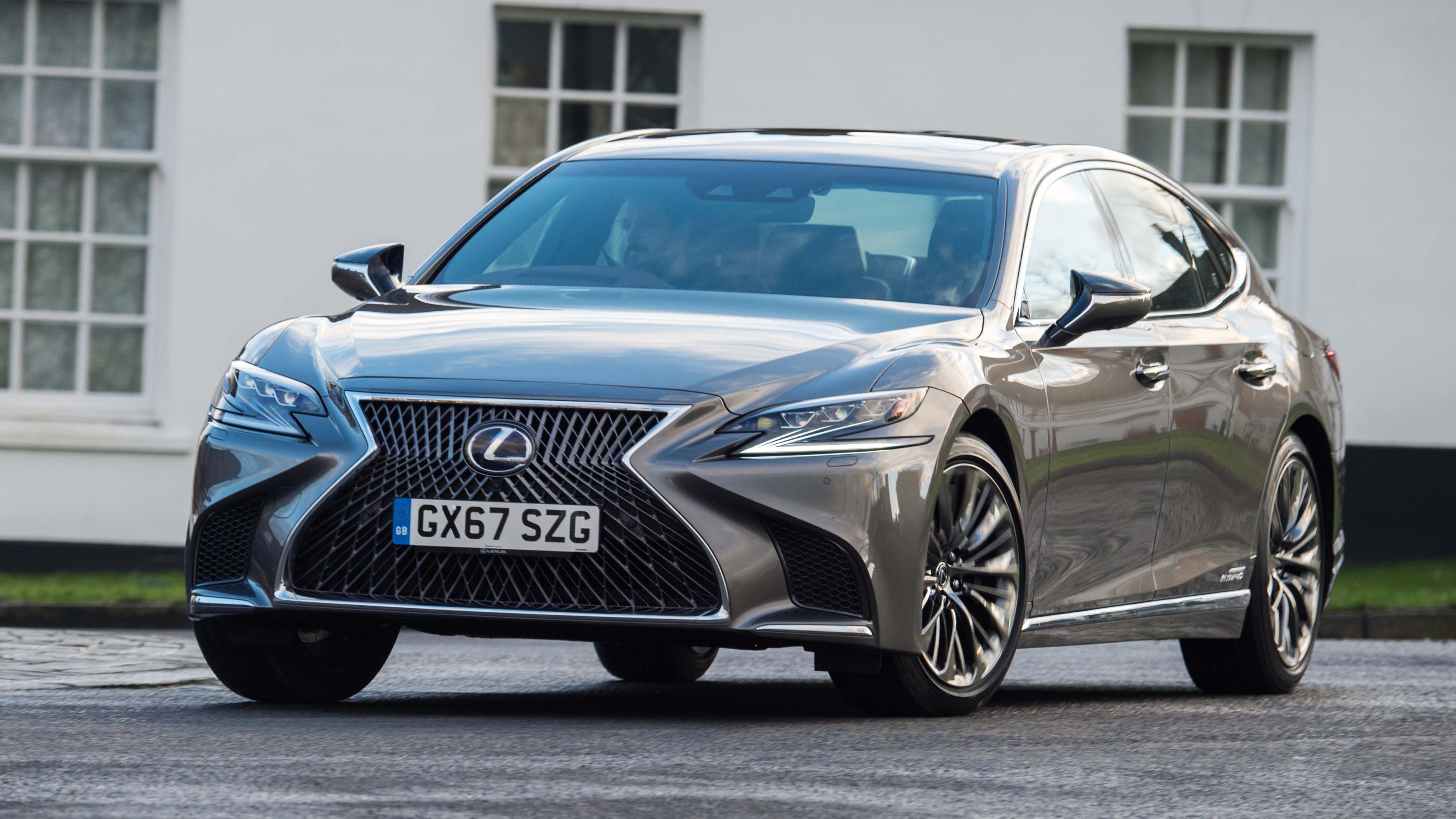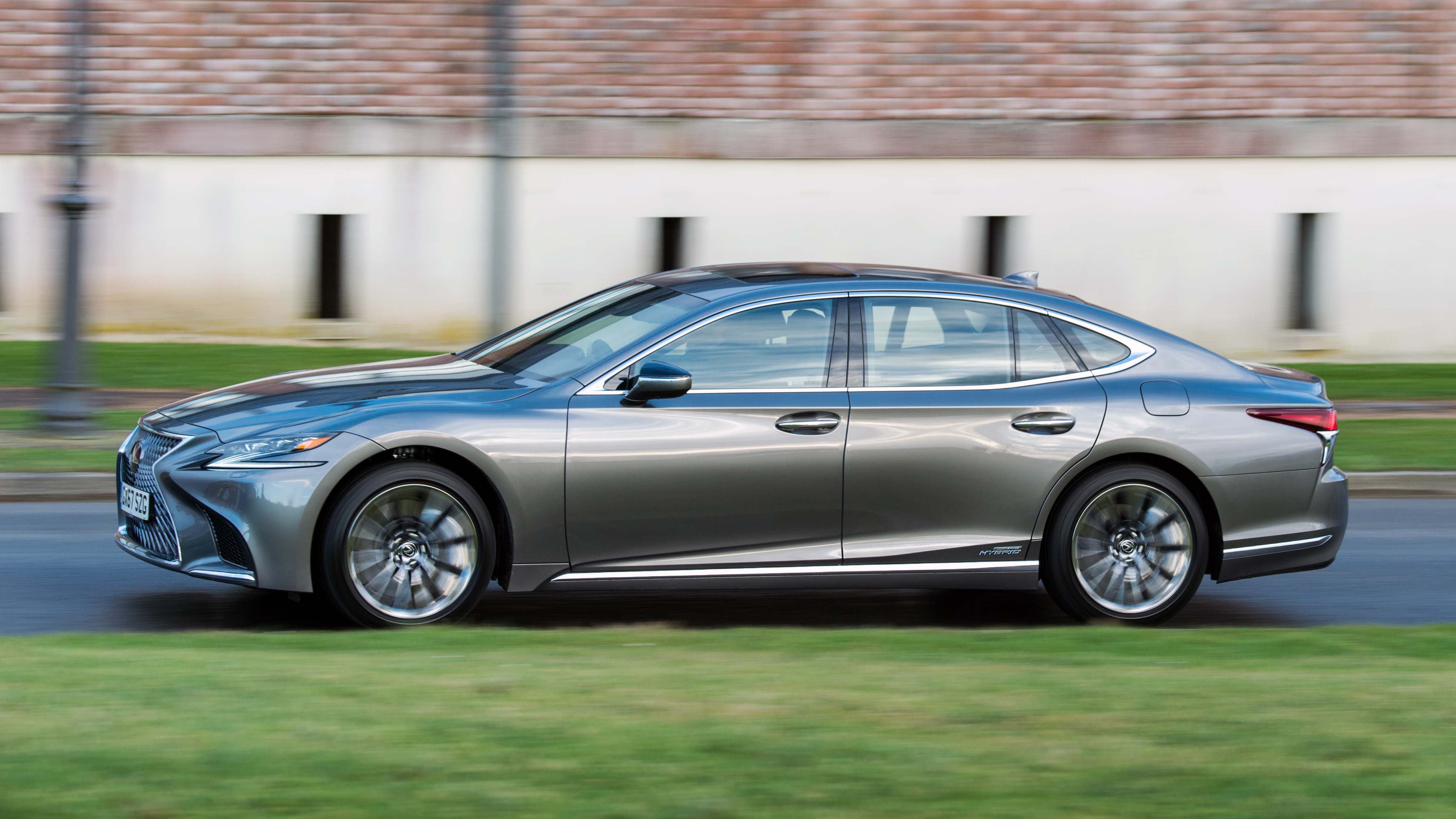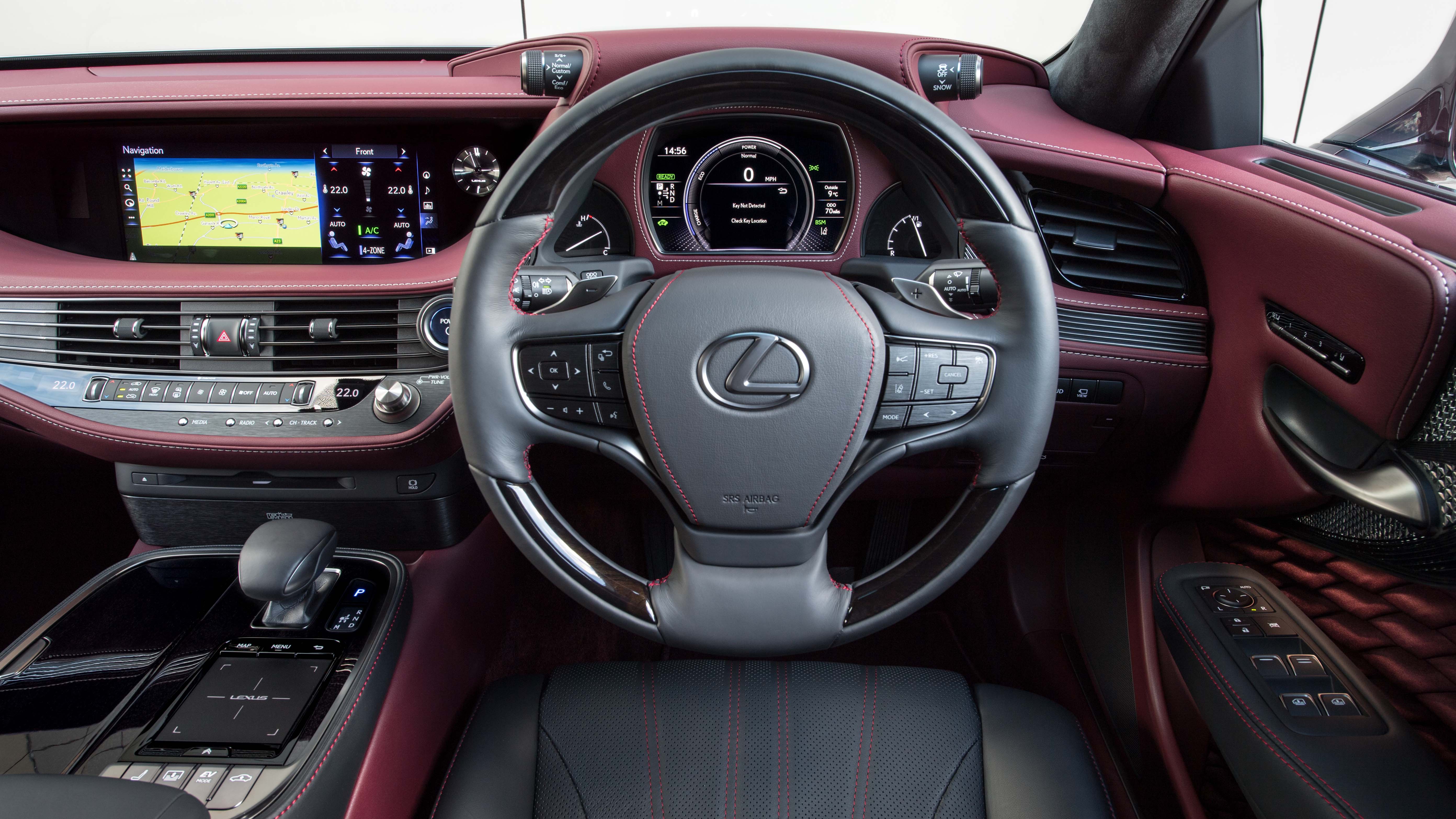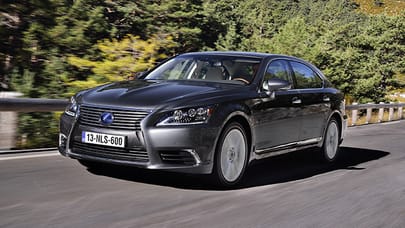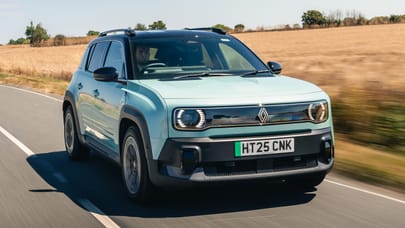
Driving
What is it like to drive?
We’re not angry – we’re disappointed. The Lexus LS teases you with its marauding, hulking presence and the sheer audacity of its interior. You expect the driving experience to match – ultra-luxury, with a technical edge. The very best Japan can offer. And instead, the LS’s driving experience is a let-down.
This isn’t the usual moan than CVT ‘gearboxes’ lack the drivability of standard automatics. The LS tries to get around this by connecting a CVT to a four-speed auto, to give a total of ten artificially stepped gears. It’s a superior system to a CVT on its own, but predictably, still isn’t preferable to a good automatic. However, this would be tolerable if the engine the CVT was managing wooshed and hummed in distant breaths, but instead, being normally aspirated and lacking in torque that’s only subtly compensated for by the battery and motor, the V6 strains and drones.
At town speed, this is a supremely quiet, relaxing car, but the moment you attempt something as fundamental as a smart motorway sliproad entrance, the mask slips, and the noise invades the tranquil cabin. The four-speed automatic and its affixed continuously variable transmission – the only ‘gearbox’ on offer – sends the weedy V6’s revs wringing to get the LS moving, disrupting the ambience like a kazoo at a funeral. For nigh-on £100,000 at the top Premier spec, that simply shouldn’t be happening. Not when an equivalent petrol-powered Audi A8 or BMW 7 Series are as quiet as a mouse in a monastery.
In raw performance terms, Lexus claims 0-62mph in 5.1 seconds, and a top speed of 155mph. So, against the clock, it has all the performance you’d reasonably expect. And if you crank the mode switch round from Comofrt, Eco or Normal mode to Sport or Sport +, the throttle response is pleasing and the LS500h can accelerate with required gusto. We just wish it delivered it more serenely.
We like the steering: it’s light but consistently weighted – more so than the latest Audi A8, which heaps on too much weight at motorway speed – and the steering wheel itself is super-small, which adds a sense of agility to a big ol’ bus. It’s 5.2 metres long, this thing, and 1.9-metres wide, and you’ll only get rear-wheel steering to help in tight spaces if you spec the F-Sport. Tell your chauffeur to breathe in…
If you’ve accepted the powertrain is a mismatch, then the LS can charm you in other ways. Its ride is expertly damped, and the wheel control is exemplary. There’s far less of a sense of the wheels weighing a metaphorical tonne, and kerr-langing into potholes and expansion joints, whether you’re at 6mph, or 60. As low-speed ride goes, this thing’s got an A8 or 7 Series licked. It’s such a lovely low-speed car, the LS. Certainly, if you’re planning to dwell and drive exclusively in city limits, the LS makes a stellar case for itself. If only in had the flexibility out of town to match.
Variants We Have Tested
Trending this week
- Car Review
BMW 1 Series




